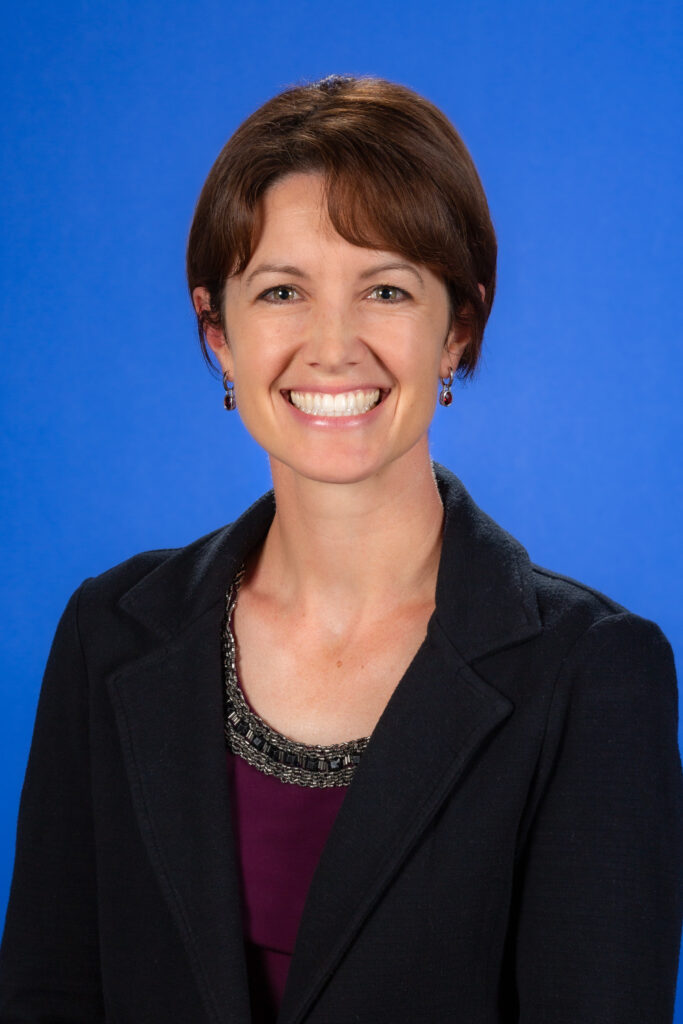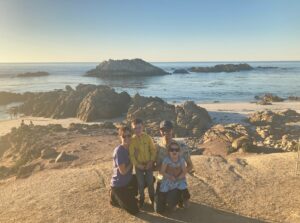
Sign up for a new account.
And get access to
The latest T1D content
Research that matters
Our daily questions
Sign up by entering your info below.
Reset Your Password
Don't worry.
We will email you instructions to reset your
password.
Stephanie Crossen, MD, MPH, is a pediatric endocrinologist and Associate Professor of Clinical Pediatrics at UC Davis Children’s Hospital in Sacramento, California. Dr. Crossen also serves as a faculty member and researcher at the UC Davis Center for Health and Technology.
Interview with Stephanie Crossen, MD
In this interview, Crossen discusses her expertise in supporting people with type 1 diabetes (T1D) and working to improve patient care through the T1D Exchange Quality Improvement Collaborative (T1DX-QI).
 The T1DX-QI was established in 2016 — with the support of The Leona M. and Harry B. Helmsley Charitable Trust — in an effort to refine best practices and improve daily life for people with type 1 diabetes (T1D). Growth has been tremendous, with 54 endocrine clinics from across the U.S. participating in the Collaborative.
The T1DX-QI was established in 2016 — with the support of The Leona M. and Harry B. Helmsley Charitable Trust — in an effort to refine best practices and improve daily life for people with type 1 diabetes (T1D). Growth has been tremendous, with 54 endocrine clinics from across the U.S. participating in the Collaborative.
Fueled by top leaders in diabetes care, the T1DX-QI has become an engine of innovation and inspiration. By engaging with the shared, data-driven, and systematic methods of the T1DX-QI, clinics have seen unprecedented success in their approach to diabetes management.
With members working closely together to identify gaps in care, discover and refine best practices, and share research — the process has become knowledge-sharing at its very best. While collated data gives clinics a clear sense of “where they are,” it also demonstrates “where they can be,” by applying shared, evidence-based methods for improving care.
What led you to endocrinology?
“As an undergraduate biology major, I planned on getting a Ph.D. and doing research in a science-related field, but I realized bench research wouldn’t be as satisfying as direct human interactions,” said Crossen, who set her sights on pursuing a Master of Public Health degree instead.
Seeking career advice, Crossen was advised if she wanted to make a difference in public health, perhaps medical school should be on her radar, too. “It was suggested that the combination of degrees would create satisfying roles — and they were right,” explained Crossen, who went on to obtain an MPH-MD dual degree from The University of North Carolina at Chapel Hill.
When asked what she enjoys most about endocrinology, Crossen said, “As an endocrinologist, I see interesting yet treatable conditions and can help people live long, healthy lives. But most of all, I enjoy developing close, longitudinal relationships with patients and families.”
Crossen, who has been at UC Davis for seven years, has an NIH K award with a research focus on population health and the delivery of effective and efficient medical care. With her innovative public health approach underpinning the management of T1D, Crossen dedicates about 25 percent of her time to patient care and 75 percent to research.
Telehealth and remote monitoring studies
“At UC Davis, we have a long history of telemedicine. It’s a strength of our institution that’s led me to think about ways it can be leveraged to improve care for our T1D population,” said Crossen, who began her first telemedicine study in 2017 to facilitate personalized care through increased touchpoints rather than prescriptive three-month visits.
While Crossen examined telehealth and its impact on T1D care, simultaneous advances in technology-enabled remote monitoring. This resulted in an opportune time to explore virtual care, as providers began receiving diabetes device data, explained Crossen, whose work was somewhat of a “novel idea” at the time, being that it was pre-COVID.
Crossen found that telehealth flexibilities offered an opportunity to better characterize a person’s individual life circumstances, including disparities that can disproportionately affect health outcomes.
“Our families generously welcomed us into their homes and virtual visits opened a window on factors that were invisible in-clinic,” said Crossen.
“Some families had extremely challenging living situations — trailer homes without refrigeration or adapted living inside of garage spaces — while others were in temporary housing after wildfire evacuations. It was eye-opening,” explained Crossen. “Some of these stories have stuck with me.”
While extra touch points gleaned improvements in A1C values, families were reporting a correspondingly high degree of satisfaction. “We saw incredible improvements, even for our high-risk families,” said Crossen. With positive outcomes in hand, Crossen began applying for more telemedicine grants, and her learnings preceded a massive surge in telehealth use as COVID-19 unfolded.
Engagement with the T1D Exchange Online Community
 “During the pandemic, telemedicine became the ‘norm,’ which was fantastic,” said Crossen. Nevertheless, a data gap remained in terms of reported user experiences, so Crossen set out to learn more.
“During the pandemic, telemedicine became the ‘norm,’ which was fantastic,” said Crossen. Nevertheless, a data gap remained in terms of reported user experiences, so Crossen set out to learn more.
“I started looking at population studies and surveys. I wanted to know more about who was using telemedicine and if it was helping, but also to understand who was being left out.” By utilizing the T1D Exchange Online Community and Registry, she surveyed individuals with T1D (or their caregivers) about their virtual healthcare experiences.
Crossen was the first researcher to utilize the Registry as a recruitment tool for a survey. Her research results — “Patient Perspectives on Use of Video Telemedicine for Type 1 Diabetes Care in the United States during the COVID-19 Pandemic” — shed new light on the growing practice of virtual medicine.
This also proved to be a pivotal point for Crossen’s work as she branched from interventional research into remote monitoring — and while maintaining a mix of synchronous telehealth studies, she began to examine ways to monitor a population more widely.
T1DX-QI and UC Davis Children’s Hospital
“At UC Davis Children’s Hospital, we’re still in the process of data mapping and getting up and running. While we’re early in the process, even in the first few months of meetings I’ve attended, I already have so many ideas for quality improvements — it’s really impressive,” said Crossen who serves as the primary PI, along with two pediatric endocrinology Co-PIs and three adult endocrinology Co-PIs.
“We’ve wanted to be a part of T1DX-QI for many years, and I’m thrilled that our diabetes center is now part of the Collaborative,” said Crossen.
“Interacting with providers that are tackling similar issues — such as delivery of care and disparities — and discovering more about their institution’s strategies accelerates everyone’s learning,” said Crossen. “I’ve gained valuable insights from other centers’ attempts to implement or improve depression screening, identify and assist food-insecure families, and administer new FDA-approved treatments for early T1D.”
While everyone has different PDSA cycles, Crossen explained, “It improves where we start from next — shared learning moves everyone forward. Harnessing the experiences from many care centers is essential, so we can learn from one another’s efforts and develop best practices and shareable resources that will help the diabetes community at large.”
The future of personalized care
Crossen continues to utilize technology to revolutionize and disrupt T1D care, providing more proactive, individualized care. Her research focus is two-fold: Identifying and intervening with the right patient, at the right time. This means a stronger emphasis on algorithmic technologies to pinpoint those in need of support and the timelines in which to provide it.
When it comes to public health, Crossen is known for “thinking big,” and scaling ideas to greater populations of people. When you pair this with T1D care, it amounts to having the entirety of a clinic’s population on the same pop-health platform providing timely, hands-off alerts prompting individualized care and outreach.
While the current state has some glitches — such as a patient’s interoperability within T1D healthcare being dependent upon their ability to not only obtain technology but to upload results, Crossen sees them becoming less and less. That said, for certain segments of the population, barriers remain for in-between visit care, which is distressing for Crossen and an impetus for her persistence and diligent work.
“There are populations where tech gaps are serious, but it’s a focus area and I do think we’re making improvements. It’s not only about access but also about digital literacy to keep tools running — and I worry about the widening of disparities and people falling behind our current treatment capabilities,” said Crossen.
Challenges with telehealth
“There are system processes and workflow issues, limitations to the exam, and other existing issues in digital health visits. To be sustainable, it needs improvements. At UC Davis, we’re lucky to have two diabetes navigators who obtain data before visits, but again, we have challenging barriers with mobile uploading and in certain circumstances, patients need in-person care,” explained Crossen.
“During the pandemic, some patients had in-clinic visits because of barriers such as a lack of internet or poor access to diabetes technology. Because of these limitations, there were patients at high risk for COVID, that would have benefited from a virtual visit, but couldn’t be seen via telemedicine.”
Having experienced virtual visits, there’s a subset of individuals that aren’t interested in returning for in-clinic visits. Like others, UC Davis serves a large catchment area, which means there’s the potential for a lot of driving, missed work and school, and gas and other expenses. “We’re trying to come up with patient-centered, safe recommendations and guidelines for these situations,” explained Crossen.
“I’m part of a group that recently authored a perspective statement from the Endocrine Society on the appropriate use of telehealth. While we received a lot of opinions, there isn’t much data either way. More research is needed, but for now, we can’t be prescriptive about how many times someone needs to see us in person because we don’t know.”
What’s next?
Crossen has a clinical trial underway currently that involves synchronous telehealth and remote patient monitoring and is moving towards more population-level management trials to develop care algorithms for proactive outreach on a population scale.
She’s also working on a multi-site study with colleagues from UC San Francisco and Children’s Hospital LA that is leveraging focus groups with Latinx parents and teens to better understand barriers and facilitators of diabetes tech use in this population, which is a large and growing one in their state. With stakeholder input, the end goal is to design telehealth-driven interventions that will reduce current disparities in tech use among Latinx adolescents with T1D.
In addition, Crossen is working on a transition of care project involving peer support and education delivered via telehealth for young adults to assist them with the knowledge and skills needed to successfully manage their own care.
What do you enjoy outside of work?
Outside of work, Crossen enjoys running, reading historical fiction and mysteries, playing loose-rules tennis with her kids (ages 6 and 8) and husband, baking, frenetic spurts of gardening, family movie and game nights, and visiting the ocean. She’s currently living in the town where she grew up, after spending 16 years away pursuing her undergraduate and post-graduate education in various parts of the country.
Jewels Doskicz
Related Stories
1 Comment
Meet the Expert: Evaluating Telemedicine in T1D Patient Care Cancel reply
You must be logged in to post a comment.








There are enough motorcycles in every sector of Traffic Rider MOD for your needs. All routes and racing modes are compatible with it, from affordable supercars to well-known automobiles. Download the traffic rider 2 mod apk from ( https://www.trafficridermod.me/ ).